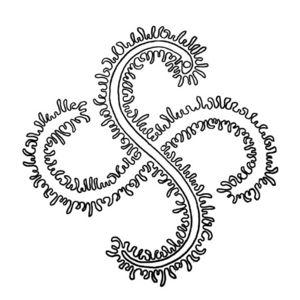In Basque mythology, Sugaar (other names: Sugar, Sugoi, Maju) is the male half of a deity associated with storms and thunder.
Etymology
The name Sugaar or Sugar seems to derive of the addition of the words suge (serpent) and ar (male), meaning therefore male serpent. Nevertheless, some have pointed to the possibility that it could be another agglutination which is hidden in the word: su (fire) + gar (flame), meaning in this case flame of fire.
Sugoi, another name of the same deity, has the same dual interpretation: either suge + o[h]i (former, old serpent) or su + goi (high fire). There's no likely etymology for the third name of this god, Maju. The reference to a masculine phallic power could be implied in it,if it has reference to the traditional 'Maypole' of fertility celebrations,called in spanish the "Mayu"(Maypole).Maya and Mayo( "Macho"?) being her spring time consort.
Description
Sugaar is normally described as dragon or serpent. The basic theme of his existence is to periodically join with Mari in the mountains to generate the storms.
Stories
- In the town of Ataun he is said to have two homes: in the caves of Amunda and Atarreta. He is said to have been witnessed crossing the sky in form of fire-sickle, what is considered presage of storms. In this area is also said that Sugaar punishes the children that disobey their parents.
- In the town of Azkoitia Sugaar is clearly identified with Maju. He meets Mari on Fridays (the day of the akelarre or sabbat), conceiving then the storms.
- In the town of Betelu is known as Suarra and considered a demon. There they say that he travels through the sky in the shape of a fireball, between the mountains Balerdi and Elortalde.
- There is one myth in which he seduces a Scottish princess in the village of Mundaka to father the mythical first Lord of Biscay, Jaun Zuria. This legend is believed to be a fabrication made to legitimate the Lordship of Biscay as a separate state from Navarre, because there is no historical account of such Lord. Only the fact that the delegates of Mundaka were attributed with the formal privilege of being the first to vote in the Biltzar (Parliament) of the province may look as unlikely indication of the partial veracity this legend.
References
- La primitiva religión de los vascos, José Dueso, Orain S.A., 1996. ISBN 84-89077-56-8.

